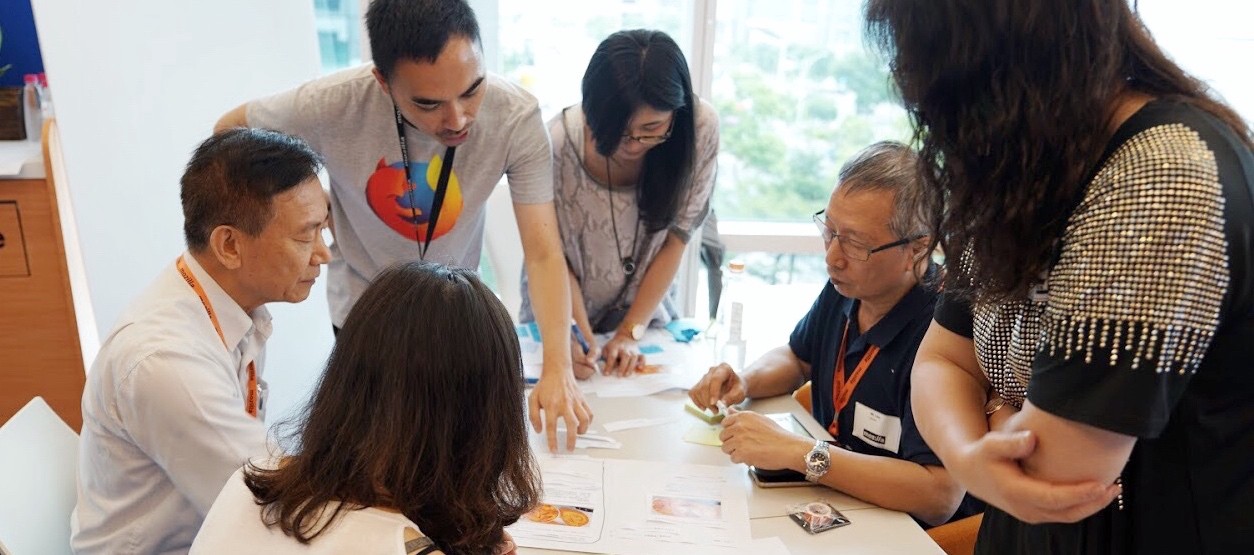
8 tips for hosting your first participatory workshop
Tina Hsieh, Sr. product/ UX designer @ Mozilla
“Why not give it a try?” Ricky, our senior user researcher said. “Design with people in my parents age without any design backgrounds? In-ter-est-ing……!” I couldn’t believe that he just threw such a crazy idea in our design planning meeting.
Before we go through the whole story, let me give you more context about it. Mozilla Taipei UX team is currently working on a new product exploration for improving the online experience of people between the age of 55~65 in Taiwan. From 2 month, 4 rounds of in-depth interviews we conducted with 34 participants, we understood our target users holistically from their internet behaviors, unmet needs, to their lifestyles. After hosting a 2-day condense version of design sprint in Taipei office for generating brilliant product concepts (more stories, stay tuned :)), we were about to reach the stage of validation.
How do we know if the concepts are solving users’ pain points? What will be the best validation method? We were discussing enthusiastically in the meeting. As designers with age 30+ years younger than our users, we weren’t fully confident with our concepts. Then we realized that participatory workshop might be a good approach especially for such a special segment of the target users.
We have lots of experience on hosting workshops, but most of them are internal. This is our first time hosting a participatory workshop externally, and also our first time having a group of participants who have lots of life experiences but zero for designing. That’s why I felt so anxious when we decided to give it a try. But in the end, we nailed it. We were so satisfied with what we learned from the whole process, and how efficient it is (compared to having individual user interviews).Here are the tips summarized from our experience.
Set Goals
Starting with clear goals is the key for the entire workshop
Since we can’t accomplish all of what we have in mind in just one 2.5-hrs workshop, we need to make clear goals and scope at the outset to make sure we’re focusing on the right direction. During our planning session, we went through all the hypothesis and product concepts, and discussed about the questions we have for validation.
After the prioritization, the 3 goals we want to achieve through the participatory workshop are: validating the hypothetical scenarios, get users’ feedback for the product concepts, and get more insights from their crazy ideas.
Invite Participants
Participants who are extreme users help us get more valuable insights
Phone interviews are very useful for screening participants. Before we decided to hand out the invitation, we need to make sure that he/ she not only fit our participants’ criteria, but also is an expert on the use cases we set. Influencers with who can express their digital experience precisely are the best, because we’ll ask them to share their thoughts on the design topics, not just having Q&A interviews (from the previous street intercept experience, we found out that some of the people at this age bracket couldn’t do so).
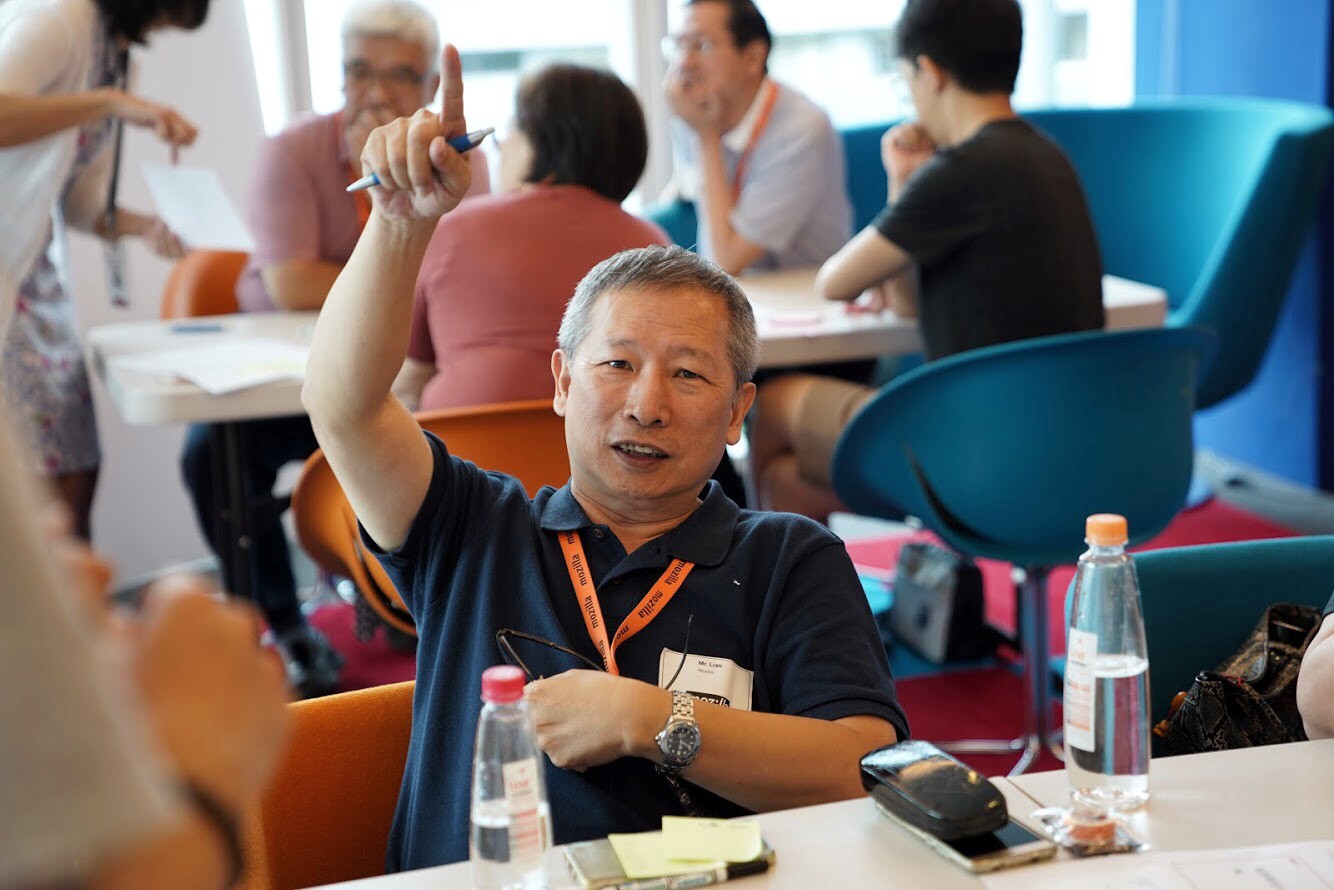 The extreme user shared his cross-device online experiences with the team
The extreme user shared his cross-device online experiences with the team
3+1+1 is a magic combination of a team in the workshop
We set up 2 teams in the workshop. In each of the team, we have:
3 Participants
Consist of all genders, and from diverse industries.
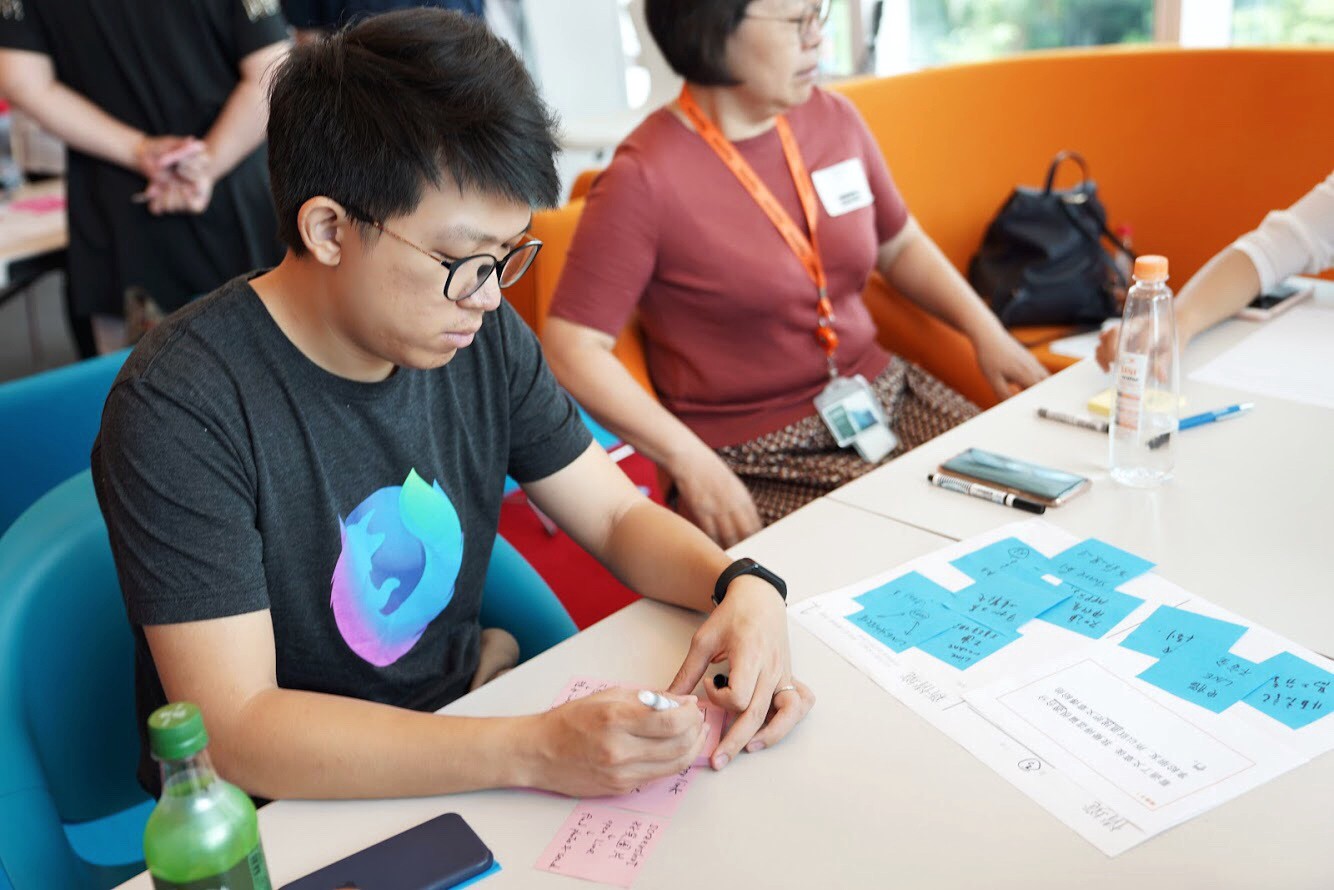 A designer took notes from his observation
A designer took notes from his observation1 Designer
Considering our senior participants don’t have any design experience, we invited a designer to join the team’s designing conversation to avoid having 3 strangers staring at each other all the time. Surprisingly, our participants all expressed their thoughts quite well and contributed ideas smoothly.
However, senior participants preferred to speak out their thoughts instead of writing things down, so we switched the designer’s role immediately to note taker. From the learning we got, we suggest to have the designers to:
- Listen and note down the differences between general users and participants.
- Explore more insights and visualize the ideas.
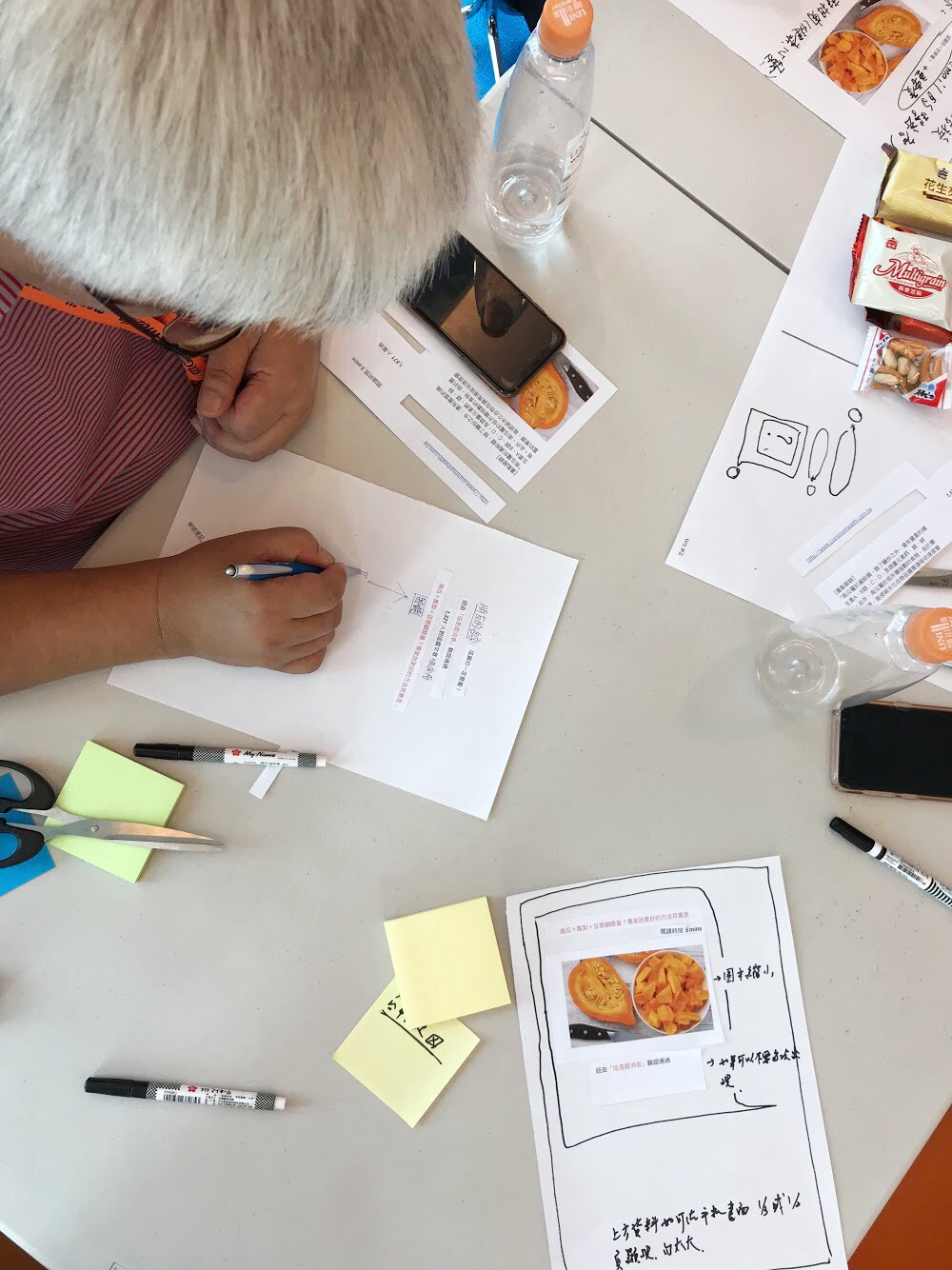 A facilitator showed some examples to the participants
A facilitator showed some examples to the participants1 Facilitator
The facilitator will be in charge of maintaining the momentum in each session. Instead of brainstorming with participants, he/ she will focus on:
- Create vibrant atmosphere and engage every single participant.
- Trigger ideas by providing some examples.
- Time control and redirecting to the topic when needed.
Design the Workshop
The warm up activity kick started the creative and imaginative atmosphere
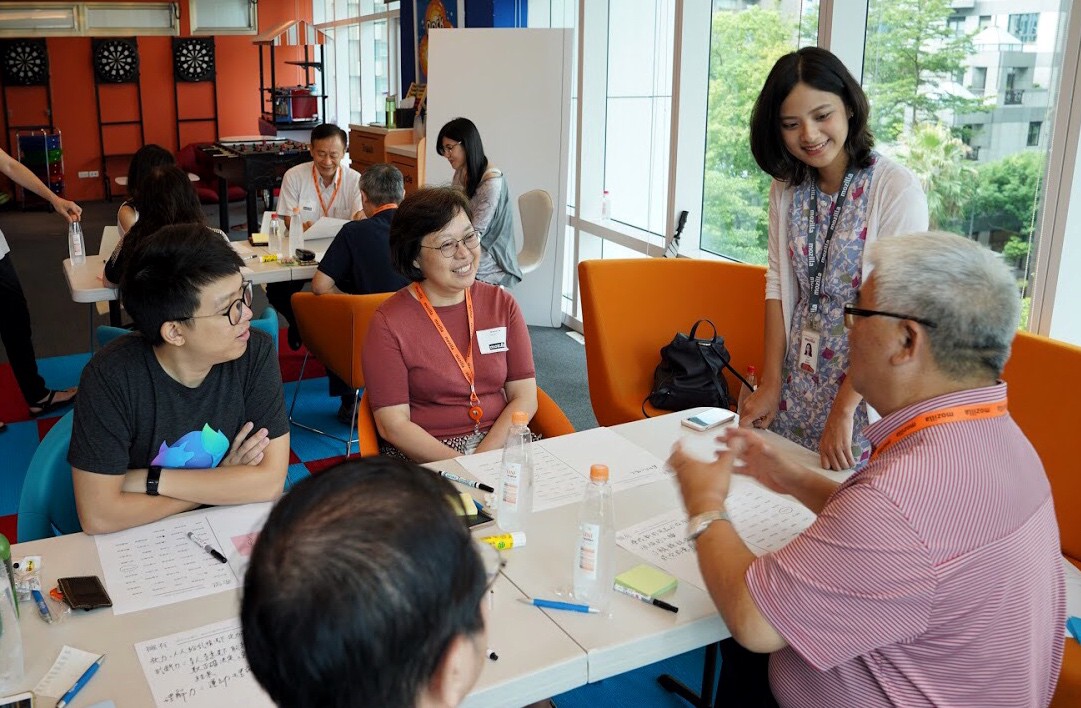 The atmosphere was delighted from the outset
The atmosphere was delighted from the outset
Don’t forget to add this most interesting session in your workshop! If you arrange the warm up activity successfully, the participants will not only practice creative thinking but also get more familiar with other team members in a delightful way.
The activity we ran is a super power game which is similar to the icebreaker in Gamestorming. In the first 10 mins, we asked participants and designers to share their own super power in their daily life, such as making 6 dishes at a time or finding the best deal of merchandise. This was a good chance for them to have a peek of other team members’ life and personality, and also for us to build a sense of the participants’ profiles.
Then, we provided a bunch of unrealistic terms on a sheet for them to select the ones they wish to own for their future superpower. The terms are so odd that they’re forced to discuss with each other to figure out what the meaning was, and got a sense of “nothing is impossible” through the activity.
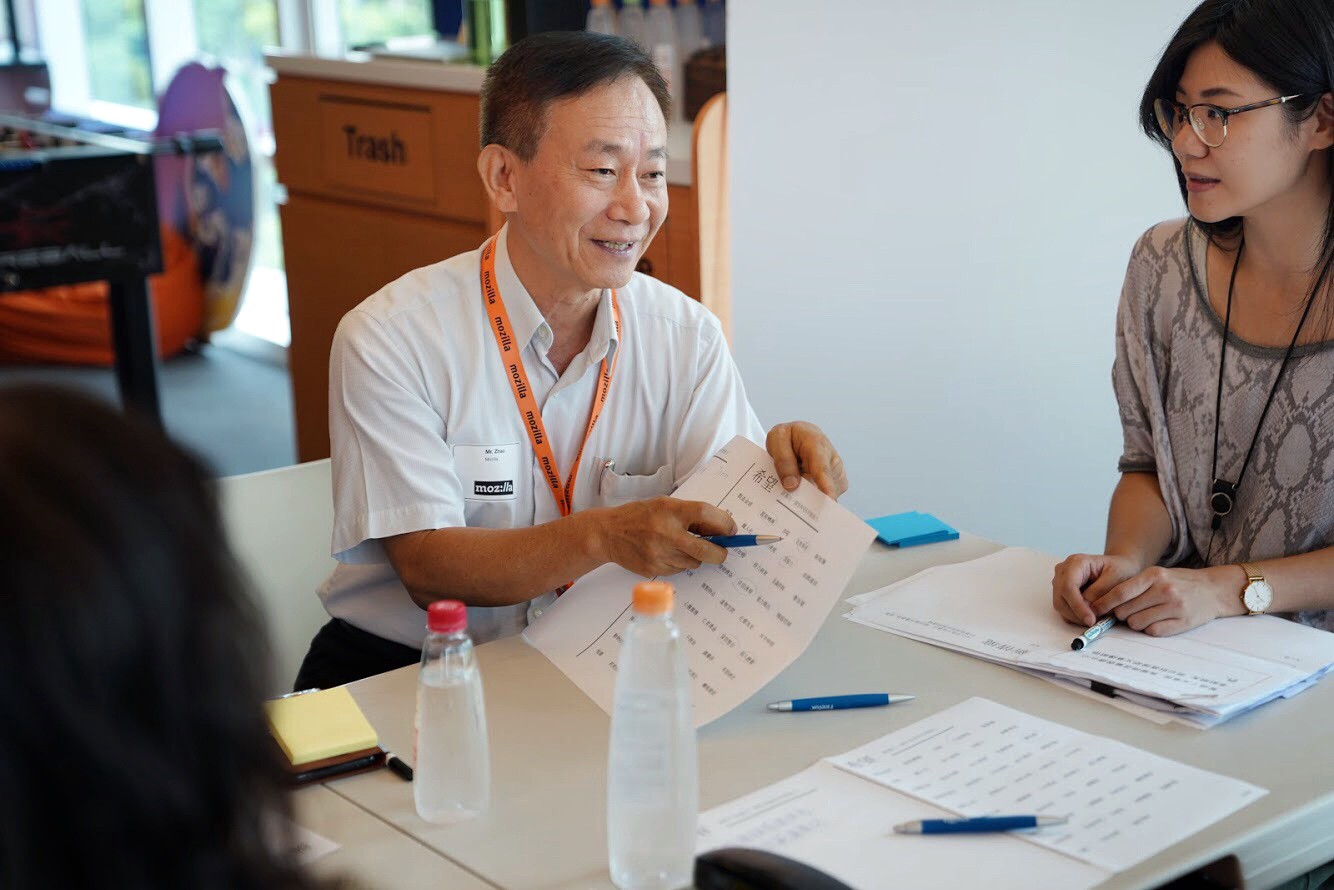 Participants started some conversations by discussing the terms on the sheet
Participants started some conversations by discussing the terms on the sheet
Validate the scenarios by asking true/ false questions
Answering right or wrong is easier than creating scenarios from scratch. We prepared 10 scenario cards related to the product concepts, and had a true or false question for each card. When designing the scenario cards, we intentionally keep the statements vague, so that we can ask participants to explain what the real scenarios look like without leading them. Here’s an example: